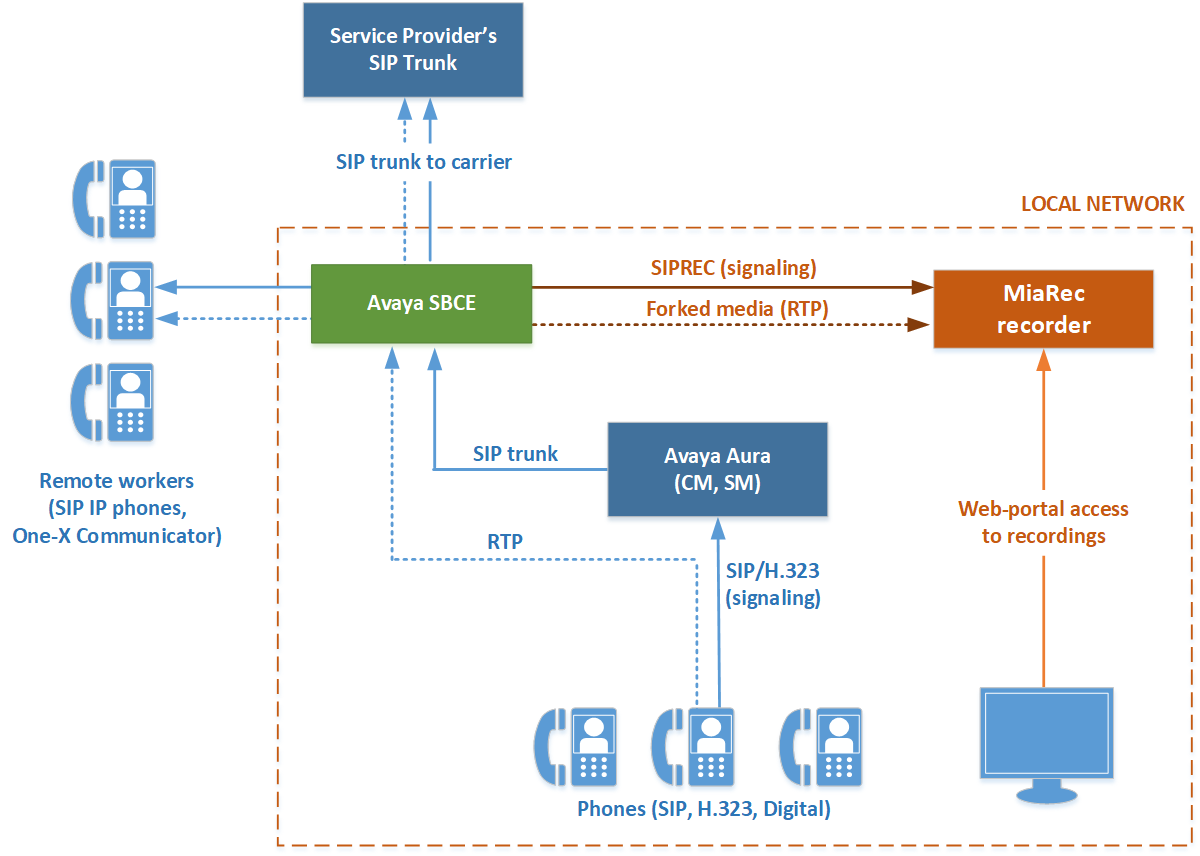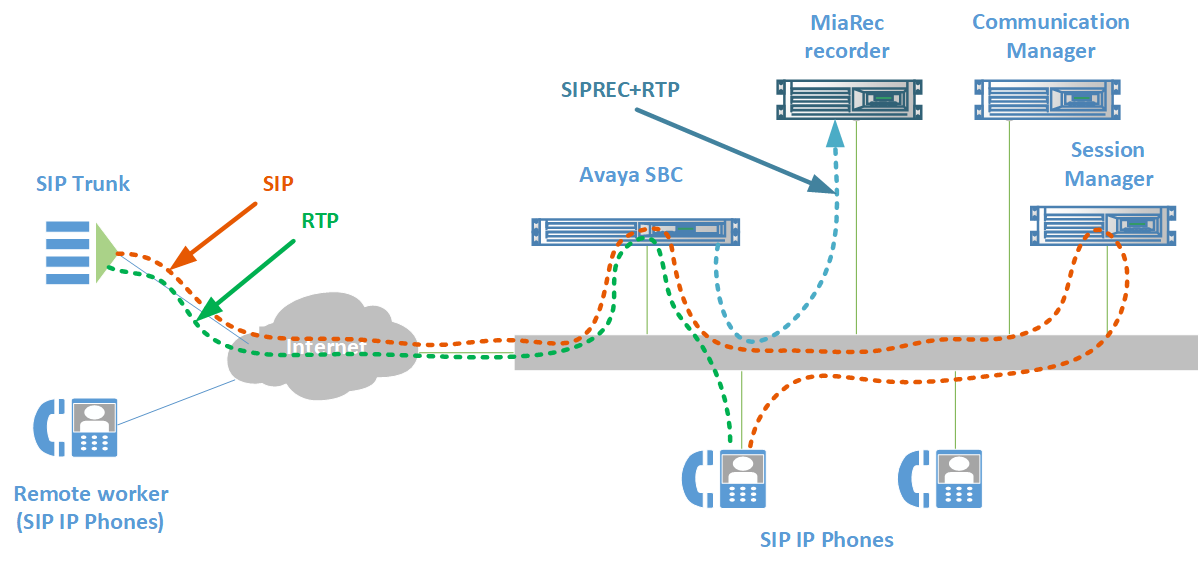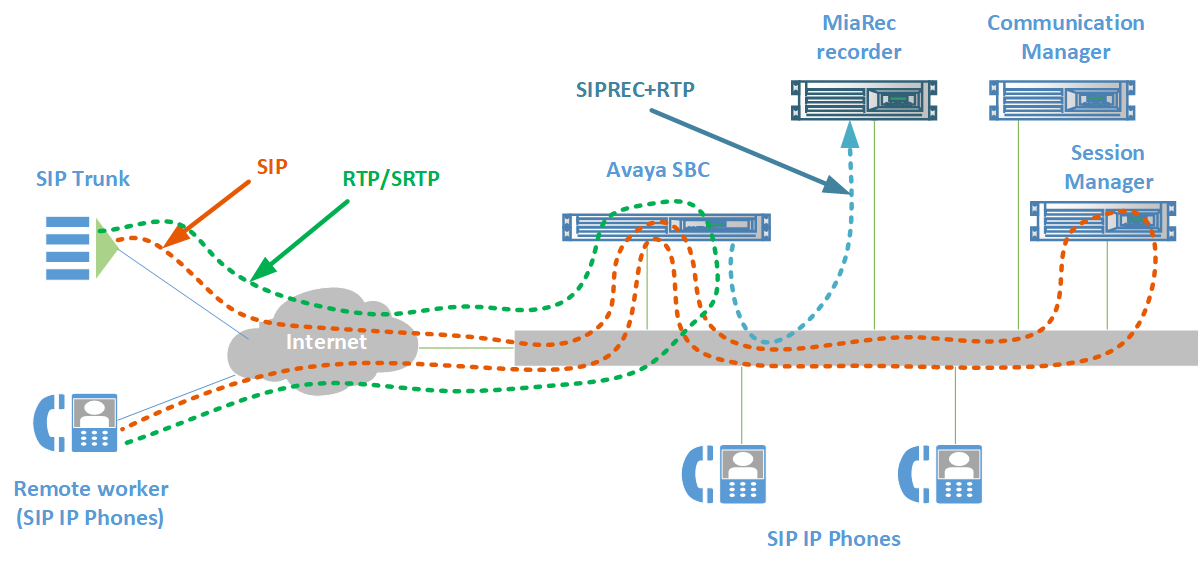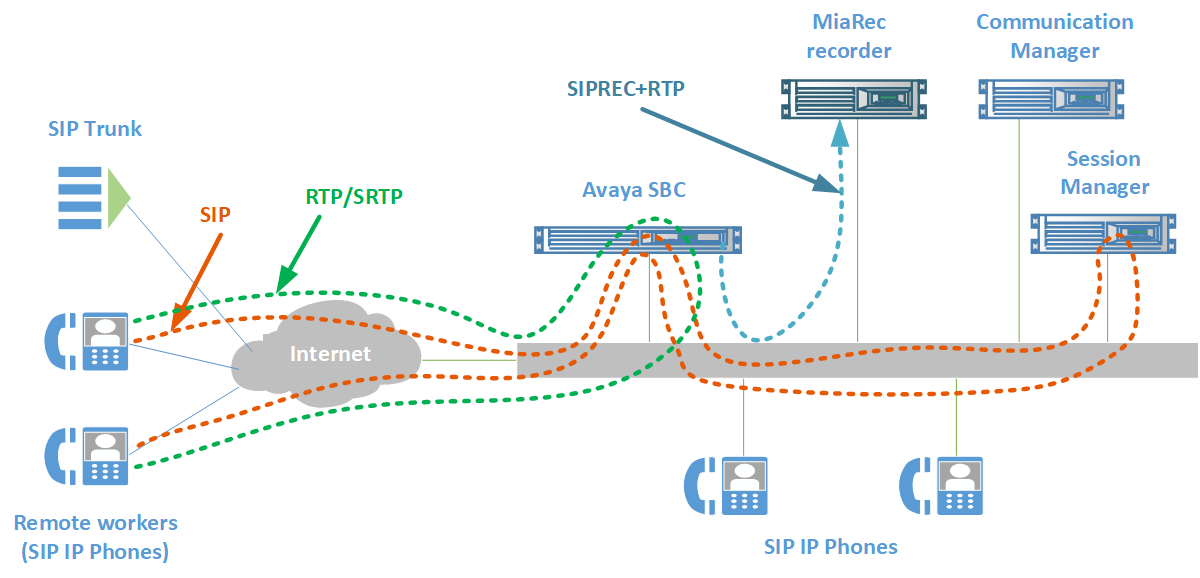01. How it works
The Session Recording Protocol (SIPREC) is an open SIP-based protocol for call recording. The standard is defined by Internet Engineering Task Force (IETF). Avaya SBCE acts as the Session Recording Client, while MiaRec acts as the Session Recording Server. Recording of a media session is done by sending a copy of a media stream to the recording server. Metadata is the information that is passed by the recording client to the recording server in a SIP session. The recording metadata describes the communication session and its media streams, and also identifies the participants of the call.
When call passes through SBCE to SIP Trunk, the call metadata and media are forked to the recording server using SIPREC protocol. MiaRec application records call sessions. End users can access recordings using web user interface.

Prerequisites:
- Avaya SBCE v.7.1 or newer (older versions do not support SIPREC or have limited support)
- Every recorded call additionally requires one standard and one advanced license on Avaya SBCE
Supported call scenarios:
- Inbound/outbound calls via SIP Trunk to local endpoints at the enterprise site.

- Inbound/outbound calls via SIP Trunk to Remote Workers.

- Internal calls between Remote Workers and local endpoints at the enterprise site.

- Internal calls between Remote Workers

Not supported call scenarios:
- Internal calls between local endpoints at the enterprise site. Avaya SBCE is not in a media path for this scenario, so call recording cannot be done using SIPREC on the SBCE.